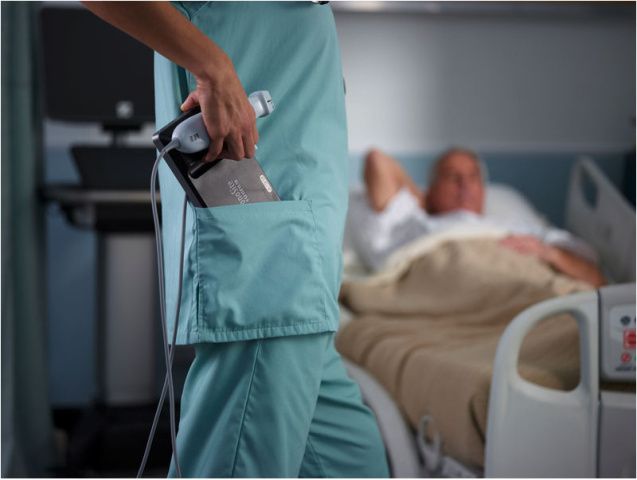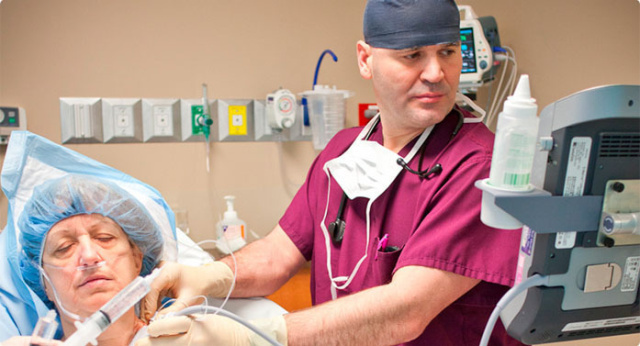ASA “Practise Guidelines for Central Venous Access” Published
It may be an exaggeration to suggest that every other month a new guideline or requirement is released by a professional medical body recommending or directing that ultrasound—especially bedside (a.k.a., point-of-care) ultrasound—be incorporated into clinical best practices, but often it feels like it.
Case in point: In my last CMO Corner, I commented on the AIUM recognizing the American College of Emergency Physician’s Policy Statement “Emergency Ultrasound Guidelines,” which acknowledged point-of-care ultrasound as part of emergency care’s best practices.
Not long ago, new ACGME Program Requirements for Graduate Medical Education in Pulmonary Disease and Critical Care Medicine directed that instructors include the teaching of specific bedside ultrasound techniques to graduate students. (By the way, Sonosite is offering equipment and training to help educators meet the requirements that go into effect July 1, 2012.)
…
Studies Indicate CT Scan Overuse, Radiation Overexposure
Recently the medical literature has documented the growing use of CT scans. It is certainly no secret that, when circumstances warrant, Sonosite advocates for the consideration of ultrasound first over other imaging modalities. A CT scan is a powerful and valuable test when used appropriately and—as with all medical procedures—when its therapeutic value is carefully weighed against its potential harm. Yet, while acknowledging CT’s value, I can’t ignore mounting evidence indicating CT scans are being ordered more often than are necessary or safe. …
Morocco Trial Shows Remote Ultrasound Can Expand Access and Improve Maternal Care.
In the remote reaches of rural areas and developing countries there is continuous demand to accessible solutions that provide reliable, faster, and affordable clinical care. Every day, around the world, approximately 800 women die from preventable causes related to pregnancy and childbirth. Of those deaths, 40 percent are due to injuries or conditions related to placenta complications. The only way to detect abnormal placenta challenges is through an ultrasound exam. …
Ultrasound Can Diagnose and Prevent Pneumothorax
I find it ironic that one of the most efficient ways to detect pneumothorax in patients is also one of the most effective ways to prevent two of its more common clinical causes.
While scenarios that might trigger the suspicion of pneumothorax are too numerous to list, screening for it has included the standard trinity of chest-imaging procedures: x-rays, tomography, and ultrasound. In “Think Ultrasound When Evaluating for Pneumothorax” (featured in AIUM’s Journal of Ultrasound in Medicine), author Vicki E. Noble, MD, of Massachusetts General, proposes that ultrasound is the ideal screening modality due to its portability and lack of “risk associated with repeated measures as clinical scenarios change.”
Dr. Noble’s article goes on to provide instruction for performing the examination, incorporates excellent research citations, and then concludes: “Using thoracic sonography as a screening tool may lead to decreased ordering of chest radiographs, thus saving time and money and improving the efficiency of treatment.”
It may come as no surprise that my colleagues and I at Sonosite enthusiastically support Dr. Noble’s conclusion. The entire article—a part of AIUM’s “think ultrasound first” Sound Judgment Series—is available here and is worth a thorough read. …
Memorial Hermann
A Success StorySee why Memorial Hermann's physicians prefer driving with total vision, then find out how we can help …
Trice Imaging, Inc. and FUJIFILM Sonosite Announce iViz Portable Ultrasound Device Integration at Health 2.0

Trice Imaging, a leading provider in the medical image management industry, announced today at Health 2.0 the integration of Tricefy into FUJIFILM Sonosite’s latest portable ultrasound device. …
From Sceptic to Believer

Growing AwarenessWhen Dr. Bryan Matusic first started practicing, the block and neurostimulator alone were considered best practise and block success rates of 85% were the accepted norm. "I was using just my own senses and the stimulator," he says. "Even if I had a 10%-15% failure rate, I was still doing better than most." …
Dr. Jeff Gonzales' Story

Catching a bus shouldn't be life-threatening. But for one 23-year-old woman, running for the bus could have cost her everything.After rushing to hop on board, she fell unconscious, leaving her arm outstretched beyond the door. Not knowing this, the driver closed the door and drove to the next stop, about two-tenths of a mile away.The passenger was shocked awake by her AICD, which she wore because of a history of hypertrophic obstructive cardiomyopathy. As she regained consciousness, she realised her forearm was still outside of the bus. …

